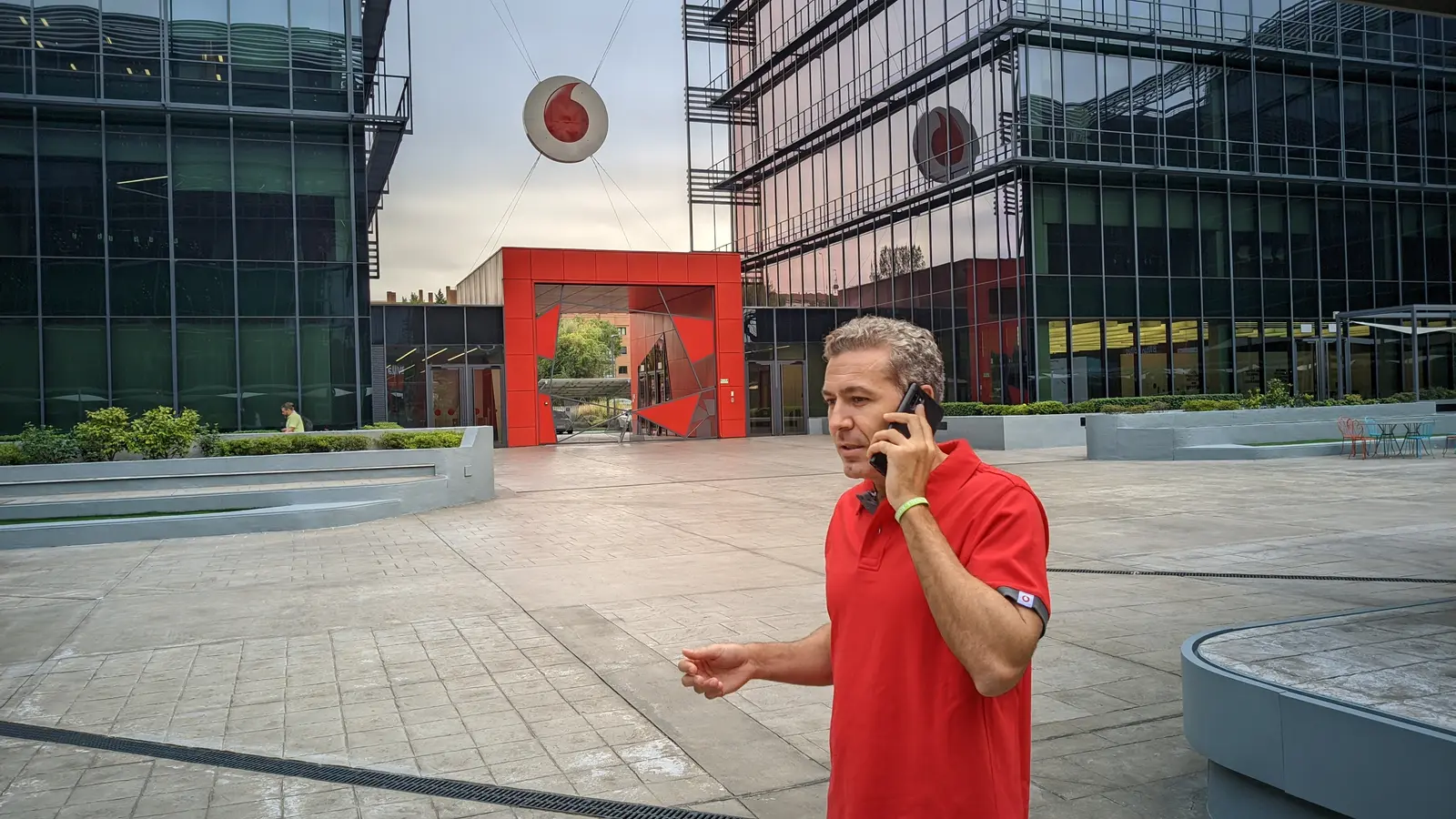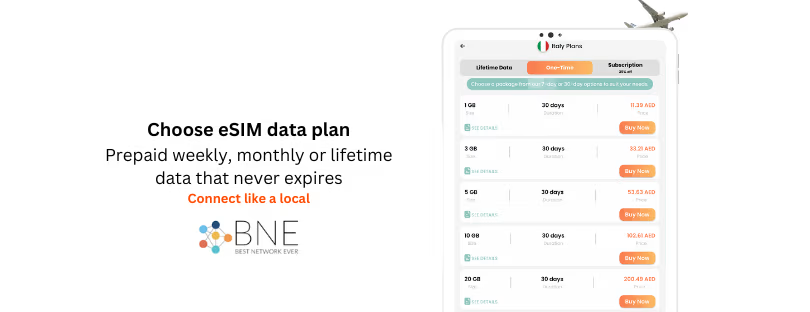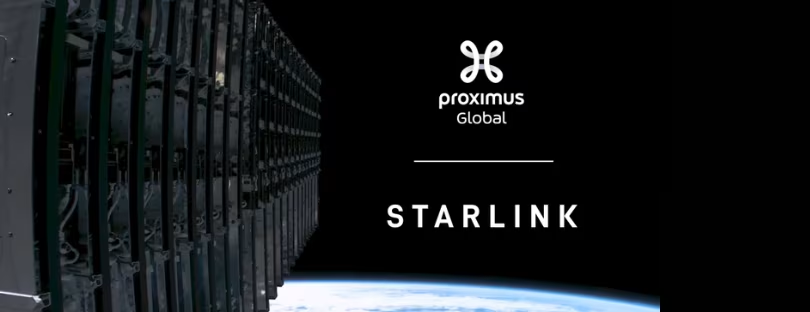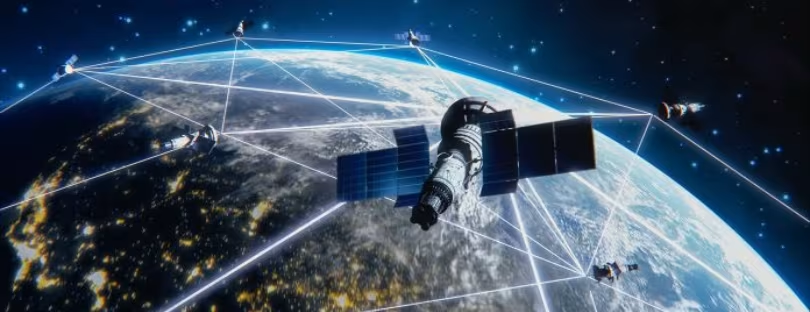
Vodafone and AST SpaceMobile Make History with First 5G Call from Space on a Standard Smartphone
In a world-first, Vodafone and AST SpaceMobile have successfully completed a space-based 5G voice call.
The call, which took place from Hawaii to José Guevara, a Vodafone engineer in Spain, was made using an unmodified Samsung Galaxy S22 smartphone and AST SpaceMobile’s BlueWalker 3 test satellite. BlueWalker 3 is the largest commercial communications array deployed in low Earth orbit.
Breaking Records and Bridging the Connectivity Gap with Space-based 5G Technology
In a separate test, AST Space Mobile, supported by Vodafone, broke its previous space-based cellular broadband data session record by achieving a download rate of nearly 14 Mbps. This new technology has the potential to connect millions of people in the remotest regions to the internet for the first time using existing mobile phones.
Margherita Della Valle, Vodafone Group Chief Executive, said:
“Vodafone is striving to close the mobile usage gap for millions of people across Europe and Africa. By making the world’s first space-based 5G call to Europe, we have taken another important step in realising that ambition. We’re excited to be at the forefront of space technology through our partnership with AST SpaceMobile.”
In June this year, AST SpaceMobile successfully completed the first 4G call from space to a mobile. Today’s advancement is part of AST SpaceMobile’s path toward its goal of launching five commercial BlueBird satellites in the first quarter of 2024.
Meanwhile, Vodafone’s engineers are also working to test the AST SpaceMobile service in Spain. Vodafone expects AST SpaceMobile’s terrestrial infrastructure in Spain to play a key role in establishing a future satellite network. This includes a control centre and the management of customer traffic, which covers remote land-based areas within Europe and the Mediterranean Sea.
Complementing its direct-to-smartphone satellite communications work with AST SpaceMobile, Vodafone, and Vodacom also plans to use low Earth orbit (LEO) satellites to connect geographically dispersed cellular antennas back to the companies’ core telecom networks.
Final thoughts via Alertify
The successful completion of the world’s first space-based 5G voice call by Vodafone and AST SpaceMobile marks a transformative milestone in the telecommunications industry, signaling a paradigm shift in how global connectivity is achieved. This breakthrough not only demonstrates the technical feasibility of integrating satellite technology with existing mobile infrastructure but also underscores the potential to bridge the digital divide in ways previously unimaginable. By leveraging AST SpaceMobile’s BlueWalker 3 satellite and unmodified commercial smartphones, the collaboration highlights a scalable and cost-effective approach to delivering connectivity to remote and underserved regions.
This advancement has profound implications for the telecommunications market, particularly in regions like Africa and rural Europe, where traditional terrestrial infrastructure is either economically unviable or logistically challenging to deploy. The ability to achieve download speeds of nearly 14 Mbps via space-based cellular broadband further positions this technology as a viable alternative to conventional networks, potentially disrupting the current market dynamics dominated by terrestrial 5G deployments. As Vodafone and AST SpaceMobile move closer to launching commercial satellites in 2024, the industry is likely to witness increased competition and innovation, with other telecom giants potentially accelerating their own satellite-based initiatives to avoid being left behind.
Moreover, this development aligns with the broader trend of convergence between satellite and terrestrial networks, creating a hybrid ecosystem that could redefine global connectivity standards. Vodafone’s strategic focus on integrating AST SpaceMobile’s infrastructure in Spain, including control centers and traffic management systems, suggests a long-term vision to establish a seamless, interconnected network capable of serving both urban and remote areas. This could open new revenue streams for telecom operators, particularly in enterprise and IoT applications, where reliable connectivity in remote locations is increasingly in demand.
However, challenges remain, including regulatory hurdles, spectrum allocation, and the need for further technological refinement to ensure consistent performance and affordability. Despite these obstacles, the successful space-based 5G call represents a significant leap forward, positioning Vodafone and AST SpaceMobile as pioneers in a rapidly evolving market. As the race to dominate the next frontier of connectivity intensifies, this collaboration sets a high bar for innovation, with the potential to democratize access to the digital economy and reshape the global telecommunications landscape.











